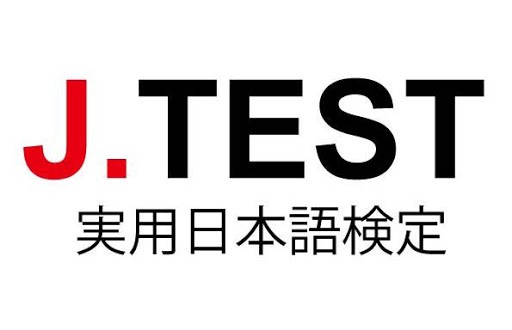For those learning Japanese with a focus on the job market, the J.TEST (Test of Practical Japanese) is one of the most relevant certifications and, at the same time, less known outside of Japan. While the JLPT is widely used in academic settings and immigration processes, the J.TEST focuses on measuring real communication ability in everyday life and the corporate environment.
In this article, you will understand how the J.TEST works, its differences compared to the JLPT, the scoring levels, the structure of the exam, dates, application locations and why this certification can be a great asset on your resume.
Table of Content
What is the J.TEST?
Created in 1991, the J.TEST (Practical Japanese Test for Business and Everyday Use) is an exam designed to assess practical mastery of the Japanese language. It is maintained by the Japanese Language Examination Association and is administered not only in Japan but also in various countries in Asia and, in some cases, Europe and America.
The main difference between J.TEST and JLPT is its focus on everyday communication and the professional environment, emphasizing listening comprehension and quick reading, as well as the contextual use of the language.
Japanese companies — especially those that engage with foreigners — place great value on the J.TEST as it provides a more accurate measure of the practical communication ability of candidates.

Differences between J.TEST and JLPT
Although both are proficiency tests, the J.TEST and the JLPT have quite different purposes and structures. Here’s the comparison:
| Characteristic | J.TEST | Adjective |
|---|---|---|
| objective | Evaluate the practical use of Japanese in real situations | Evaluate general knowledge of the language (grammar, vocabulary, and listening) |
| Frequency | 6 times a year | twice a year |
| Speech and Writing | Includes written production (levels E-F) | Does not assess written production or speech |
| Evaluation System | Score from 0 to 1,000, divided into levels A-F | 5 fixed levels (N5 to N1), without continuous punctuation |
| Aplicação | More commonly used by companies and in the corporate world | Most commonly used for immigration, scholarships, and universities |
| Difficulty Level | Considered more dynamic and practical | More theoretical, focused on textual and auditory comprehension |
| Format | Objective (mark alternatives) + writing (at some levels) | Objective (mark alternatives), without writing |
Structure of the J.TEST
The exam is divided into two main versions, according to the candidate's level of knowledge:
1. Levels A–D (Intermediate to Advanced)
This version is for those who already have an intermediate or advanced level of the language. The score ranges from 0 to 1,000 points and defines the candidate's level:
- A (900–1.000 pts) – Extremely high proficiency, able to operate fluently in any area.
- B (800–899 pts) – High proficiency in the language, ideal for demanding work environments.
- C (700–799 pts) – Able to hold business conversations and manage complex documents.
- D (600–699 pts) – Good command of the language, able to communicate with natives in various situations.
2. Levels E–F (Basic to Intermediate)
This version is aimed at beginner students. It includes handwriting exercises (kanji and basic vocabulary), and simple reading and listening.
Punctuation defines the level:
- E (500–599 pts) – Understands basic sentences and common expressions.
- F (400–499 pts) – Recognizes key words and expressions from everyday life.

What is the exam like?
The structure of the J.TEST exam for levels A–D is divided into three main sections:
Part 1 – Listening Comprehension:
Includes short conversations, announcements, and instructions. Assesses the ability to understand spoken Japanese in a natural and fast manner.
Part 2 – Reading and Vocabulary:
Test your ability to identify the meaning of words and phrases, fill in gaps, recognize idiomatic expressions, and choose the correct grammar.
Part 3 – Text Interpretation:
Presents long texts, such as news articles, emails, manuals, and formal letters. Evaluates speed and accuracy in reading.
At levels E–F, there is also a simple written section that requires the production of kanji or short sentences.
When and where to take the J.TEST?
The J.TEST is administered six times a year (usually in January, March, May, July, September, and November).
Although more common in Japan and Asian countries like China, South Korea, and Vietnam, some centers outside Asia also offer the exam. The complete list of locations is available on the official J.TEST website.
Registrations are done online and usually need to be completed at least one month before the exam date.

How much does it cost?
The registration fee varies by country, but in Japan, the standard amount is ¥4,000 to ¥5,000 (approximately $30 to $35 USD).
Why is the J.TEST valued by Japanese companies?
Unlike the JLPT, which is more static and theoretical, the J.TEST is frequently updated and uses content based on real work and everyday life situations.
Companies use the exam for:
- Evaluate new foreign employees.
- Measure the progress of international collaborators.
- Grant salary bonuses based on the level achieved.
- Verify if candidates are capable of operating in multilingual environments.
Having a high-scoring J.TEST (level B or above) can mean access to above-average salaries, especially in areas such as customer service, tourism, technology, and foreign trade.
Wrapping Up
The J.TEST is a highly practical, dynamic certification recognized by Japanese employers. If you wish to work in Japan, engage with Japanese companies, or simply test your actual communication ability in the language, this exam is an excellent choice.
More than just memorizing grammar rules, the J.TEST evaluates your ability to use Japanese in the real world, making it a valuable asset on your resume.
Consider adding this certification to your study plan — it could be the bridge between your current Japanese and the career you want to achieve.
